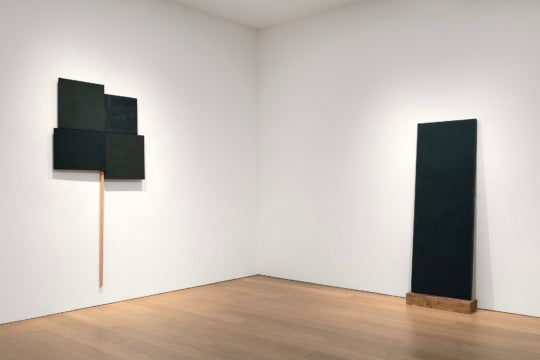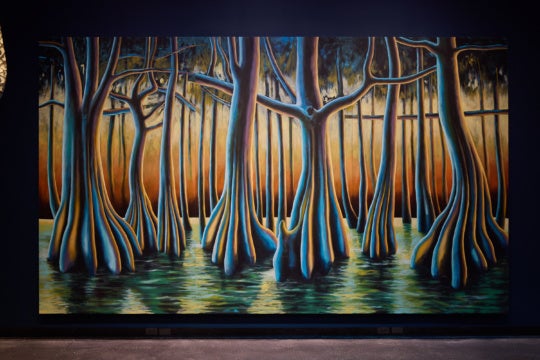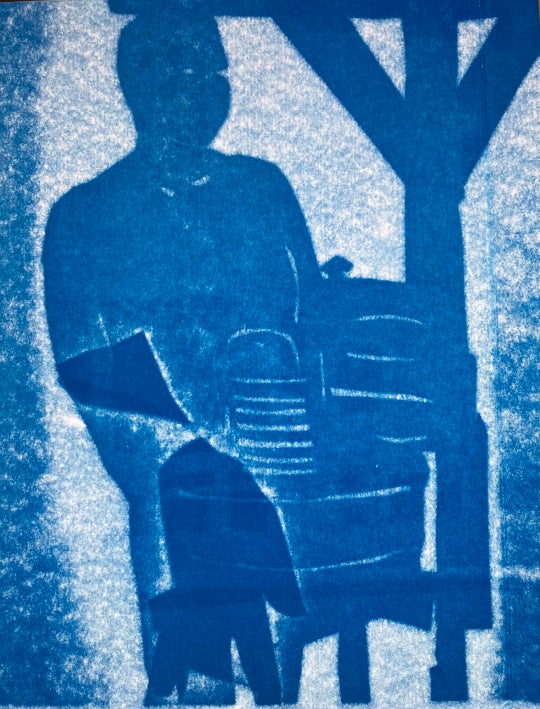
The new book Artist Spaces: New Orleans, a collaboration between photographer Tina Freeman and author Morgan Molthrop provides a glimpse into the diverse and robust contemporary art scene of New Orleans. The book is the end result of Freeman’s 12-year photographic journey through the varied work spaces of 21 New Orleans artists and Molthrop’s supporting conversations, conducted over the past two and a half years, with each of the artists represented. Freeman and Molthrop included a range of age, race, gender, experience, and media to create a fairly well rounded snapshot of the city’s art scene. Both native to New Orleans, Freeman and Molthrop are perfectly situated within the social and cultural fabric of New Orleans to undertake such a complex and multifaceted project.
The book’s pages are filled with Freeman’s beautiful photos of the working and living spaces of 21 artists. Her love for and understanding of natural light imbues each image. Her facility with light allows her to eschew cumbersome equipment. Consequently, the artists’ spaces remain undisturbed and their work continues unhindered, creating a sense of ease.

Freeman visited the studios of such artists as Willie Birch, Ma-Po Kinnord-Payton, George Dunbar, Elizabeth Shannon, and Luis Cruz Azaceta. Her ability to step unobtrusively into the private spaces of others, leaving the environment and the artist seemingly undisturbed, justified the trust her subjects placed in her.
Freeman’s singular ability to work with available light allows her to capture the tangible atmosphere of New Orleans — the very air — so much so that you can see individual dust motes dancing on the currents. Sometimes the afternoon sun warms and softens these particles and sometimes they appear crisp in the cool morning light of winter, but they are always there, a thread weaving through the entire series.
Like the visual continuity of natural light that knits Freeman’s photographs into a cohesive whole, the various connections each artist articulates in their conversational statements with Molthrop give the book a real sense of community. The voice and personality of each artist comes through in the edited interviews and texts, even when they’re responding to similar prompts. The more established artists speak to the longevity and resilience of the arts in New Orleans, while the younger artists are indicative of its growth and expansion. Themes such as their relationship to Freeman herself and to other artists included in the book, their experiences as outsiders moving to New Orleans, and their views on how the New Orleans art scene has changed in the wake of Katrina enhance Freeman’s images and give them even greater depth. Several artists speak to the give and take of having Freeman come into their private spaces, using them, to create something new. Some articulate their own surprise when looking at their spaces from a different viewpoint. It is clear that through Freeman’s images several of the artists in Artist Spaces gained a new lens with which to view their working processes and environment.

In this way, Artist Spaces is much more than just another pretty picture book of New Orleans architecture and interiors. It is a collaborative effort between Freeman, Molthrop, and the artists whose spaces and words fill the pages, and a work of art in its own right.
Artist Spaces is published by the University of Louisiana at Lafayette Press, 2014.
Megan Koza Young is an independent scholar and critic currently working as the manager of artist services for the Arts Council New Orleans. She has an MA in art history and a BFA in photography and graphic design from the University of Alabama. Koza Young is particularly interested in the way visual interpretations of trauma can create or recreate collective and cultural identity in the wake of catastrophe.





